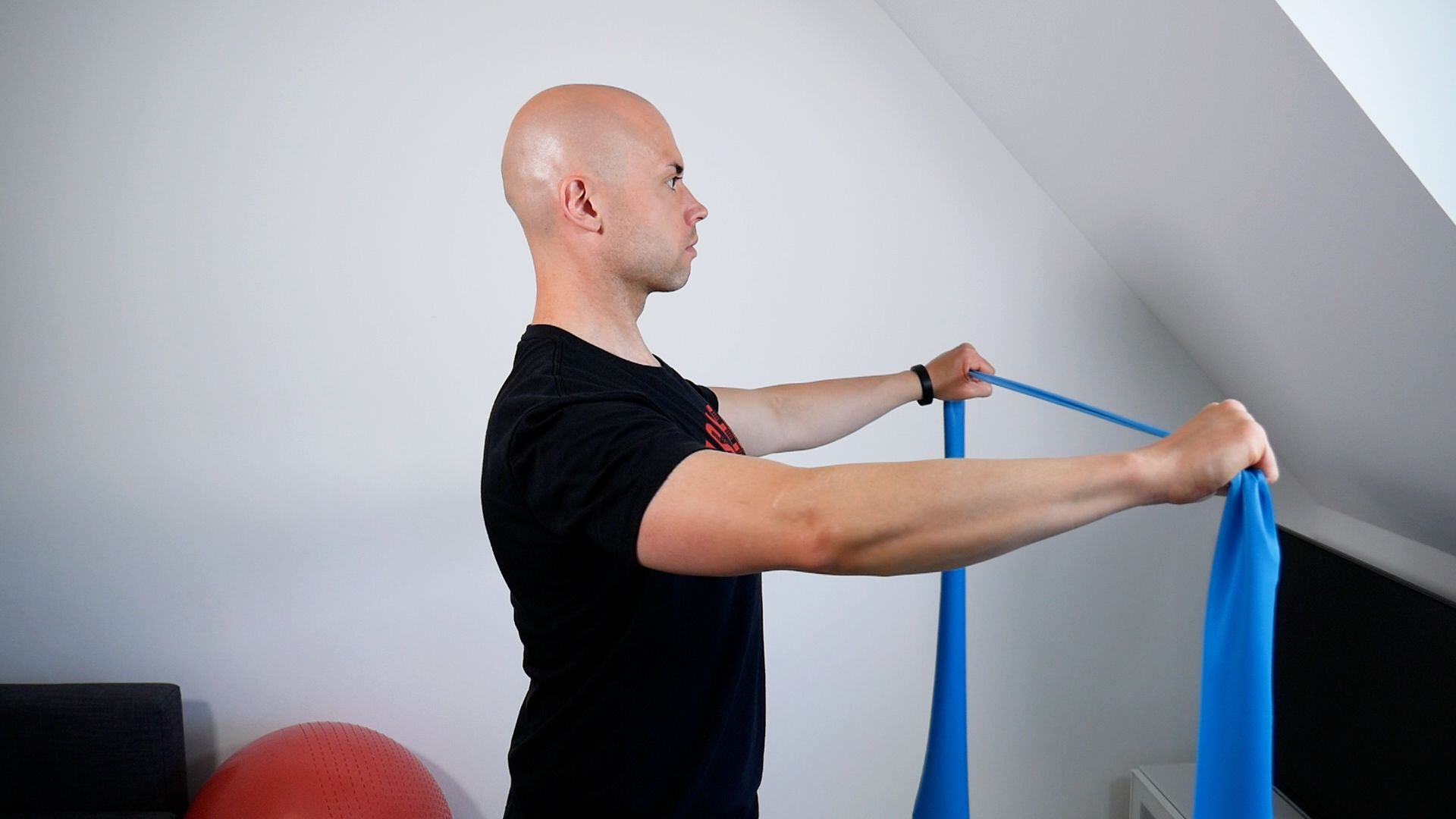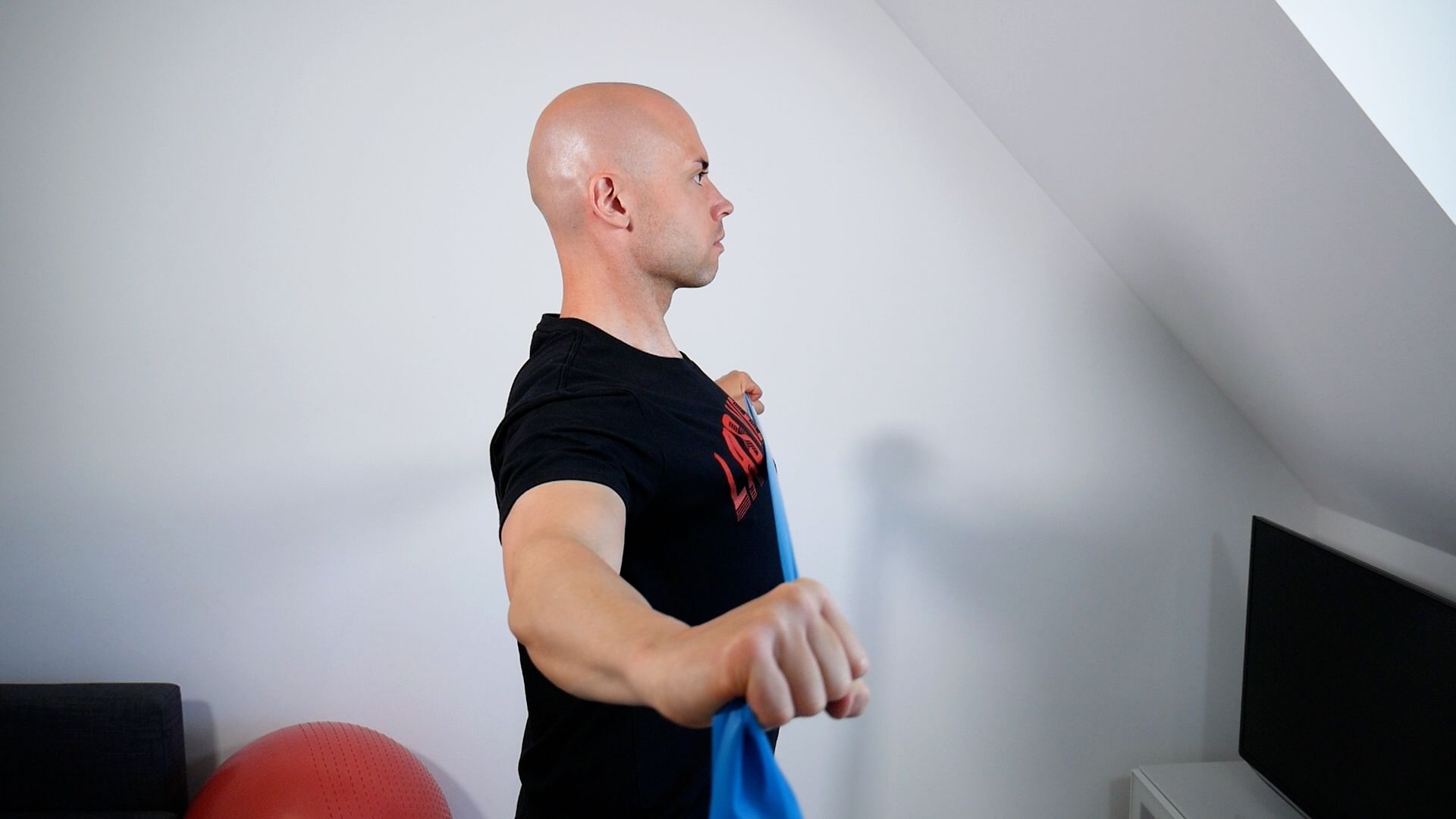The reverse fly exercise can be quite important because it works important muscles that are often underused in everyday life. For example, the rhomboids, middle trapezius, and posterior deltoids are all involved in this movement. As a result, the reverse butterfly exercise can help balance office life.
Imagine you sit in front of the computer for most of your office job. The shoulders often fall forward. And if you don’t do anything to compensate, a bad posture can become established. In order to get out of such a bad posture, it makes u. Sense to train the muscles that hold the shoulders back. And muscles that u. responsible for keeping the shoulders back are e.g. B. the rhomboids and the middle part of the trapezius muscle. If, perhaps because of everyday office life, your head is also hanging forward, then this neck exercise can definitely help you: upper cross syndrome exercise
If you generally need a few fitness bands, I can recommend the following: Resistance bands – little heavier* It may be that these fitness bands are a bit too strong for you with reverse butterfly, because the exercise naturally cannot overcome so much resistance. However, the bands linked above, at least the easy ones, may work for you. But if you also need some lighter bands, then these aren’t bad: Resistance bands – little easier*
Reverse fly exercise

Reverse fly exercise – Starting position
Hold the band about shoulder-width apart
Band is always under tension
Elbows are very slightly bent and point outwards

Reverse fly exercise – Final position
Pull the band apart
Elbows remain slightly bent and in position
Shoulder blades to each other
The links marked with * are affiliate links belonging to the Amazon partner program. If you buy something through these links, I get a commission, of course there are no additional costs for you.
References
Kisner, C., Colby, L. A., & Steffens, M. (2010). Grundlagen der Physiotherapie: vom Griff zur Behandlung; 65 Tabellen. Thieme.
Schoenfeld, B., Sonmez, R. G. T., Kolber, M. J., Contreras, B., Harris, R., & Ozen, S. (2013). Effect of hand position on EMG activity of the posterior shoulder musculature during a horizontal abduction exercise. The Journal of Strength &
Conditioning Research, 27(10), 2644-2649.
Be the first to comment